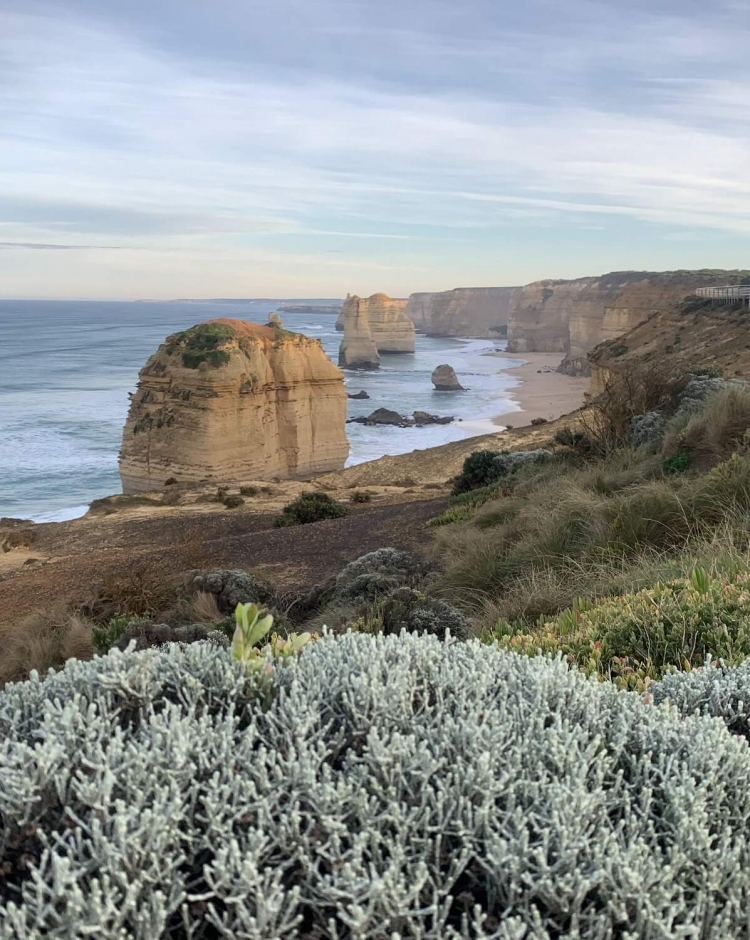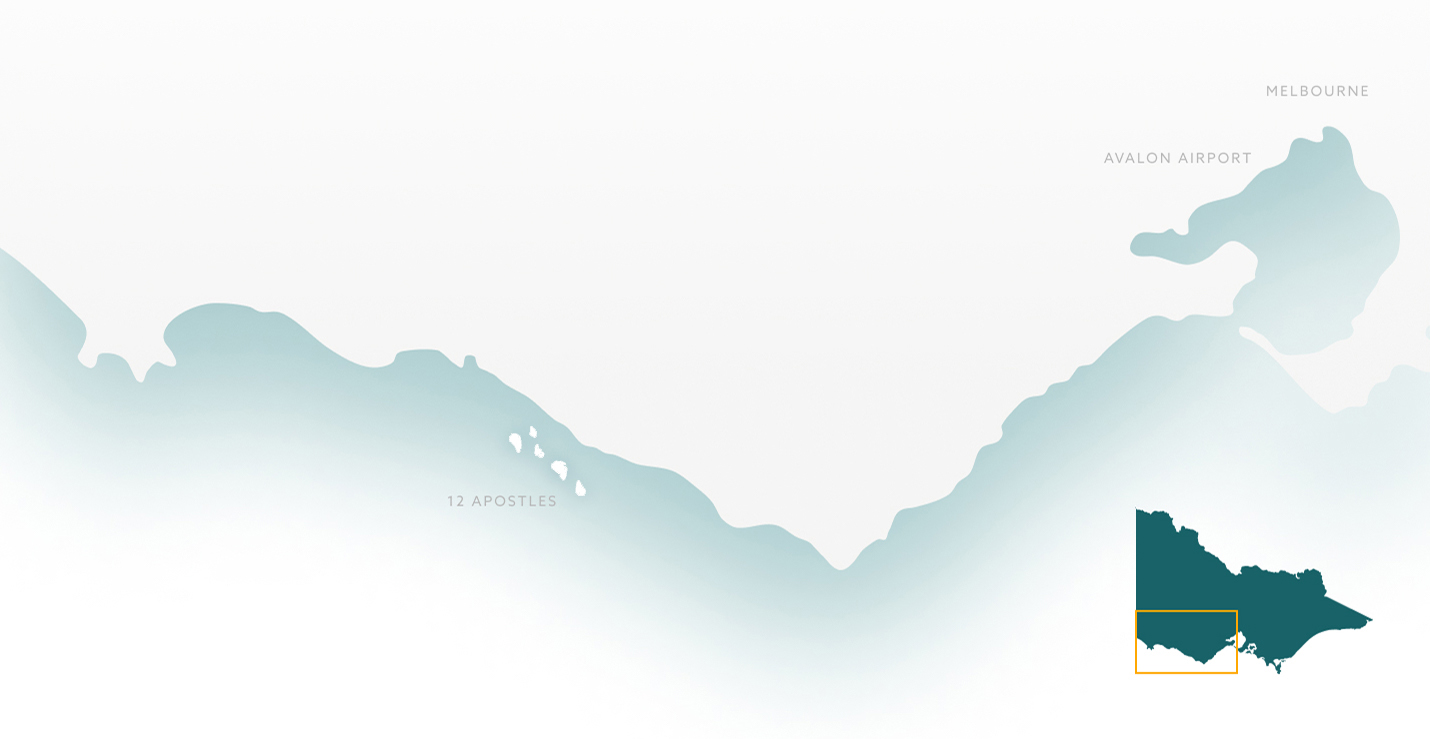

The sculpted cliff top carpet provides an almost comical homage to the power of wind that shapes it into form. Take a closer look at the hardy clusters of plants with subtle variations in texture and form, creating interest and providing a rich palette of texture and colour.
This highly specialised group of plants has a delicate beauty and an important ecological role to play. Please restrict your observations to the paths and walkways provided for your use by Parks Victoria. Visitors travelling along the Great Ocean Road can marvel at the contrast presented by the ground hugging cliff top heath in proximity to the tall emerald forests of the nearby Great Otway National Park. Guides on local flora and fauna are available from the Port Campbell Visitor Information Centre in Port Campbell.

Cushion Bush (Leucophyta brownii) - The comfiest plant on the coast! The skeletal compact structure of this low bush allows it to grow in extreme windy places. Grey coloured plants reflect more sunlight and lose less moisture on hot days.

Coast Beard Heath (Leucopogan parviflorus) — Plants with small leaves generally perform better in high wind areas, a small leaf catches less wind and is less likely to blow off the plant. The hard waxy leaves of the Coast Beard Heath are also more tolerant to salt than softer leaves.

White Correa (Correa alba) — This mid size bush has small hairy leaves. The fine hair reduces the amount of airborne salt that can land on the leaves and allows it to grow very close to the clifftop and ocean.

Drooping Sheoak (Allocasuarina verticilatta) This beautiful tree makes a whispering sound in the wind. Sheoaks have separate male and female trees (they are dioecious). The female trees have nuts and the male trees turn a browny orange when they release pollen.

Common Reed (Phragmites australis) — The Common Reed grows in wetlands and low lying areas it has long hollow tubes that allow oxygen to be transported to the roots in saturated soil conditions. The common reed is green in spring and summer and straw coloured in autumn and winter when it is dormant.

Port Campbell Guinea Flower (Hibbertia truncata) — How special is this? In 1998 botanists identified this little plant as a unique species. It’s common name range pays homage to our amazing National Park. Despite it’s near threatened status it is easy to spot in the National Park particularly when in flower from late August to January.

Messmate Stringybark (Eucalyptus obliqua) In most Australian environments eucalypts are the dominant canopy species. Not on this coast. Even the mighty must bow down low in harsh conditions. Messmate Stringybark has shiny leaves which help it to repel airborne salt. The leaves are assymetrical (each side of the leaf is a different shape). In nearby areas (Otway Ranges) Messmate Stringybark can grow up to 90m tall but in our harsh coastal environment it has to huddle for cover and rarely grows taller than the more well adapted Drooping Sheoak.

Lichen is fungi and algae working together to survive where they couldn’t survive by themselves. Lichen is more commonly found in shaded areas. There are literally thousands of weird and wonderful kinds.

Prickly Moses (Acacia verticillata) — Venture too close to this attractive shrubby wattle and you will soon find out how it got its name! The spiny foliage of the Prickly Moses provides a safe haven for small birds. Its seeds and nectar are an important source of food for birds and small marsupials.

Clematis (Clematis aristata) — This vigorous climber is sometimes called Old Man’s or Goat’s Beard which describes the whiskery seed heads that form after the plant flowers. The flowers themselves are stunning and give way to their more poetic common name of Traveller’s Joy. Look for it flowering in Spring and early Summer.



Sign up to get the latest deals, tours & events along the Great Ocean Road
Great Ocean Road Regional Tourism acknowledges the Traditional Custodians of the Great Ocean Road region the Wadawurrung, Eastern Maar & Gunditjmara. We pay our respects to their Elders, past, present and emerging. We recognise and respect their unique cultural heritage and the connection to their traditional lands. We commit to building genuine and lasting partnerships that recognise, embrace and support the spirit of reconciliation, working towards self-determination, equity of outcomes and an equal voice for Australia’s first people.